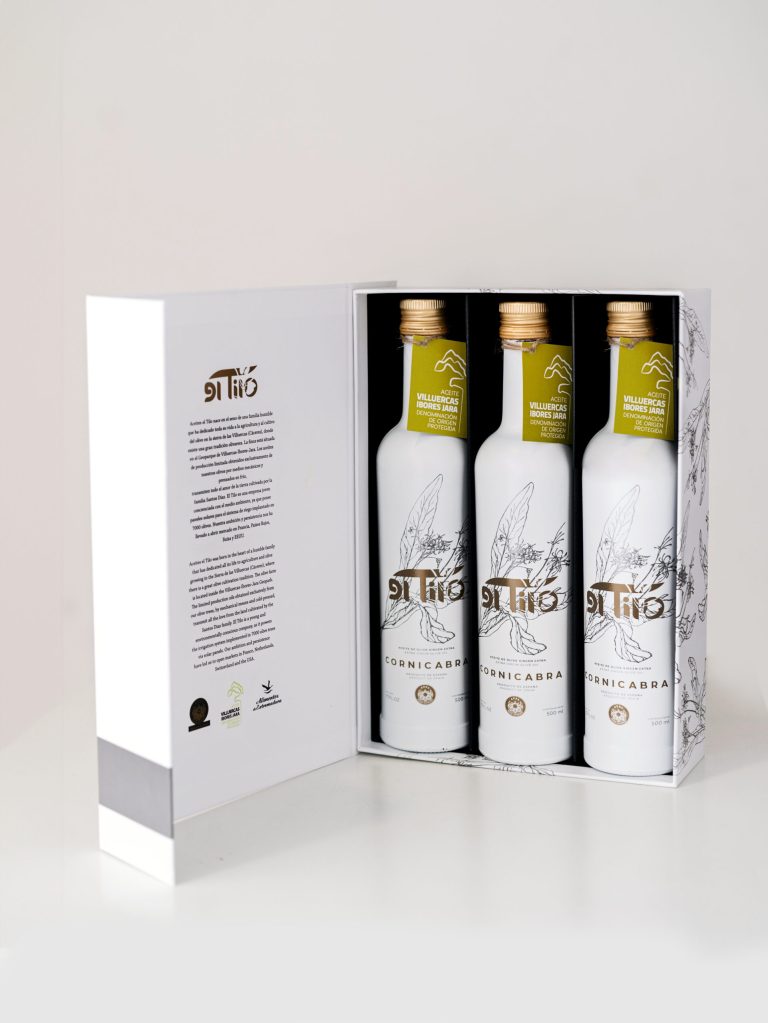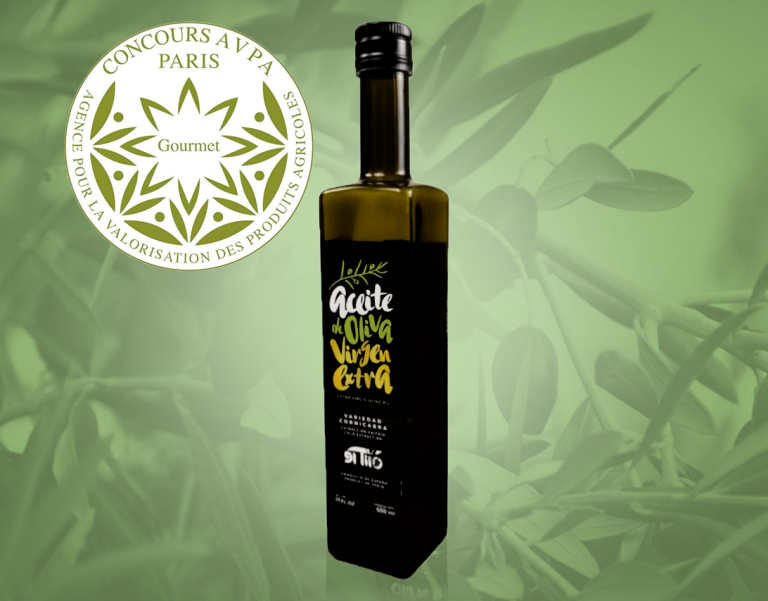The great thermal stability of Cornicabra oils is a guarantee of health and flavour in our cuisine. Let’s find out why and learn more about its properties.
Cornicabra Olive Oil Properties
When fats are heated, they are subjected to thermal oxidation. This process produces a series of alterations in their physico-chemical structure, generating substances that can be hazardous to health. It is therefore very important to know the thermal stability of the oils we use for cooking. One of the properties of virgin olive oil is that it has a high thermal stability. This is essentially due to two reasons: On the one hand, its high content of oleic acid, a monounsaturated fatty acid that is more resistant to heat than polyunsaturated fatty acids, such as linoleic acid, which are the most common in many refined seed oils, such as sunflower oil, which is widely used in Spain. On the other hand, virgin olive oil is very rich in natural antioxidants that act as a defence against thermal oxidation. Given their high thermal stability, cornicabra extra virgin olive oils are very suitable for cooking at high temperatures, as in the case of sautéed, roasted, stewed or fried foods. Nowadays there are vegetable oils on the market whose oleic acid content has been artificially increased and, in this sense, their stability is comparable to that of olives; but they are refined oils and therefore tasteless, which will bring nothing of flavour to our dishes. The flavour that extra virgin olive oil gives to food is another differentiating factor when we use it as cooking oil. For example, try frying some potatoes or eggs in cornicabra extra virgin olive oil and others in refined seed oil and you will see the difference.
Aromas and polyphenols of Cornicabra oils
We have already mentioned that natural antioxidants (polyphenols) act as a defence against thermal oxidation; but they are also responsible for the aroma and flavour of extra virgin olive oils. Polyphenols begin to be destroyed at 40-45 ºC to protect the oil, so as we cook, we lose aromas. In soups, creams and purées, where the maximum temperature does not exceed 100 ºC during cooking, olive oils retain all their taste properties, although some aromas evaporate.
High temperature stability of these oils
The stability of extra virgin olive oil is particularly evident when frying at high temperatures, between 130 ºC and 180 ºC. At this temperature, the olive oil creates a crispy, golden crust that makes the food much more appetising, without reducing its nutritional value, as the temperature inside the oil remains at around 100 ºC. 130-145 ºC: This would be the right temperature for frying foods with a high water content, such as vegetables or potatoes, which have to be penetrated, little by little, by the heat. This temperature is reached approximately when the oil bubbles when a crumb of bread is thrown. 155-170 ºC: This is the recommended temperature when we want the food to form a crust, such as floured or other battered foods, fritters and escalopes. 170-180 ºC: This is the maximum recommended frying temperature. We can tell that this temperature has been reached when the oil smells fried and smokes. It is suitable for small-sized foods, such as small fish. The maximum temperature of 180 ºC should not be exceeded. Olive oil penetrates very little into the food, making it light and digestible. Although all fats have the same calories per gram (9 cal/gr), if we fry correctly with olive oil, given its lower penetration, we are ultimately adding fewer calories to the food. Finally, it should be remembered that the oleic acid and antioxidant content is not the same in all olive varieties. The cornicabra, with 75.8% oleic acid and 593 PMM of total polyphenols, is one of the most stable in the world.



